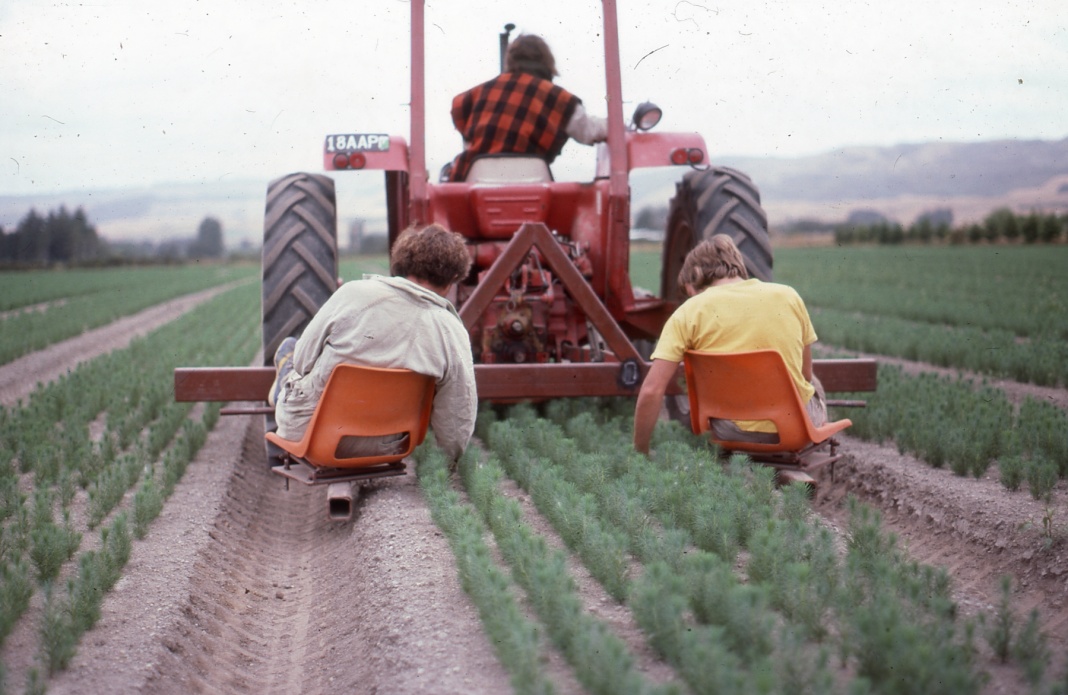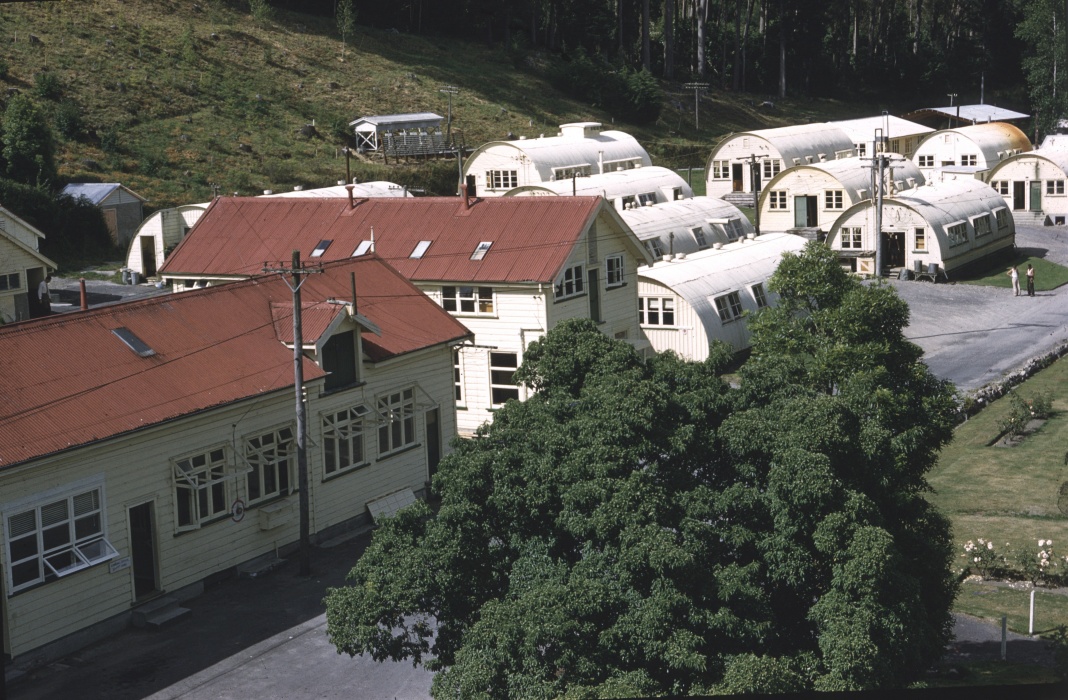Since it was established in 1947, the Forest Research Institute, which we now call Scion, has played a significant role in forest research for New Zealand.
This year, the Crown Research Institute (CRI) turns 75 and continues to deliver impact for New Zealand, not just across the forestry sector, but also in the area of biomaterials, bioenergy, waste and ecosystem services. This evolution represents the increasing importance of forests, and Scion’s commitment to enhancing New Zealand’s prosperity, wellbeing and environment through trees.
In April 1947, the State Forest Service established a Forest Experiment Station beside the existing nursery at Whakarewarewa Forest. The decision to centralise forestry research laid the foundation for Scion today, supporting New Zealand’s third largest export industry.
Scion’s research has had significant outcomes for New Zealand’s 1.7 million hectares of planted forests. Forestry adds $6 to $7 billion to the economy each year in export revenue and provides jobs for around 35,000 people.
Scion’s chief executive Dr Julian Elder says the 75th anniversary is a chance to reflect on where the organisation has come from and where it is headed, but also to really acknowledge the place that Scion sits right now – quite literally, the land on which the institute was built.

“When we opened our award-winning innovation hub, Te Whare Nui o Tuteata, in March last year, we started on a journey of inviting visitors into Te Papa Tipu campus, where Scion is headquartered in Rotorua, and sharing our work with the community.
“A significant and very special part of that journey has been the relationships we have developed with Ngā Hapū e Toru – Ngāti Hurungaterangi, Ngāti Taeotu and Ngāti Tze Kahu o Ngāti Whakaue.”
Ngā Hapū e Toru are the mana whenua of the 114 hectare site where Scion is situated in the Te Papa Tipu campus.
Ngā Hapū e Toru trustee Veronica Butterworth explains that when the land was used by the Crown as a forest nursery from 1898 and then for forestry research from 1947 onwards, physical connection of the hapū to this land was severed but the spiritual connection was never lost.
“Land is the basis of identity and wellbeing for our people,” Veronica says. “We are genealogically connected through our whakapapa to the land itself, as we trace our ancestry from Papatūānuku (the earth mother) and Ranginui (the sky father).
“Our whakapapa ties to the land and the various parts of the natural environment are fundamental aspects of our culture and our lives. Whakapapa and whanaungatanga give rise to obligations to look after the land, the waters and the environment on behalf of our ancestors and ourselves for future generations.”
“Looking to the future, our hapū are building a relationship with Scion to reconnect our people and traditions to this land. The name of this campus, Te Papa Tipu – land on which to grow – is appropriate,” Butterworth says.
It is this kaitiakitanga (guardianship) for the land, and the long-term thinking that Māori value – making changes today that will reap benefits for generations to come – that Dr Elder says is key to Scion’s contribution as we head towards a circular bioeconomy future.
“Right now, we are on the cusp of huge opportunities with the circular bioeconomy. Scion, and New Zealand, are incredibly well-placed to contribute to this – we grow things well, we’re great at the science and, vitally, mātauranga Māori and the worldview of te ao Māori has much to teach us about interconnectedness with our environment.”
For principal scientist, Brian Richardson, celebrating 75 years of Scion is a chance to acknowledge the high-calibre breadth of work that has been achieved over that time.
Dr Richardson has worked at Scion for 39 years across many areas of forest science. In that time, he has seen a lot of changes – and a lot of things come back around.

The highlights across the organisation have been many – genetic improvement of radiata pine, overcoming many forest health challenges and biosecurity incursions, supporting development of sustainable forest management practices to ensure maintenance of productivity and license to operate, and creation of management models.
“Scion has certainly been a leader across a range of research. Our work in areas such as ecosystem services – quantifying the benefits of forests beyond the timber – were happening long before the topics were accepted as mainstream activities.”
Doug Gaunt is a principal researcher in the materials analysis, characterisation and testing team. He joined Scion in 1979 and says the organisation’s contribution to the structural timber sector has been transformational.
Gaunt and his team focus on commercial testing for the timber building sector, supplying customers with the information they need to develop their own products and to meet export standards.
“Scion has been doing this work extensively for 40 or 50 years and I’d like to think that our research and expertise has impacted most building products in New Zealand. That is a huge testament to the work that has been conducted in our timber engineering labs.
Reflecting on Scion’s history, some other key areas of work have included climate change, including research around how our fast-growing forests are adept at capturing carbon quickly. Trees provide a long-term carbon sink while protecting New Zealand’s unique biodiversity, water quality and help reduce soil erosion. These are not just important for our economy, they are crucial for life.
Significant achievements across 75 years have built Scion’s reputation as a world-leader in forest industry research and technology development. Now we have a distinct multi-disciplinary capability across the value chain from germplasm generation to the design and application of wood, fibre and other forest resources in commercial products and services.
In 2000, Scion extended its focus to developing renewable chemicals, materials and energy from forest resources. These changes reflected increasing international interest in substitutes for fuels and materials made from fossil fuels and New Zealand’s need to enhance environmental performance and energy security. These concerns are much greater today as the world has suffered supply chain shocks due to Covid-19, conflict and climate change.
Scion has more than 300 staff located at its headquarters in Rotorua, as well as offices in Christchurch and Wellington.
Over the next 12 months, a range of activities and events will be held online and across the three cities as the organisation celebrates the 75th anniversary.




